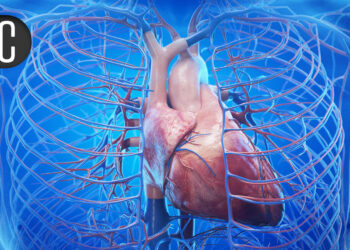Circadian rhythms regulate the sleep-wake cycle, hormone secretion, metabolism, immune responses, and even patterns of eating and digestion. They help preserve genomic stability, control the cell cycle, and support tissue-level immunity. Disruptions to this internal clock, caused by sleep problems, nighttime light exposure, and irregular eating habits, are increasingly linked to the development of cancer.
Researchers have observed altered clock gene expressions in the lung, breast, colorectal, leukemia, hepatocellular carcinoma, and glioblastoma tissues.
The study, published in Nature Immunology, was led by Bridget M. Fortin, a doctoral candidate in biological chemistry at the University of California, Irvine, United States. She and her colleagues examined whether internal and external circadian disruptions, such as nighttime sleep loss, artificial light exposure, and irregular eating patterns, contributed to the early development of colorectal cancer (CRC). They also examined whether chrono medicine could help optimize chemotherapy and immune checkpoint inhibitor therapy.
Numerous studies have linked circadian disruption to both cancer initiation and progression. Tumor samples frequently show reduced expression of core clock genes, and mutations in these genes are associated with poor survival rates. In CRC, lower levels of BMAL1, CRY1, CRY2, and PER1-PER3 are associated with reduced overall survival.
Cancer Risk
Since the mid-1970s, the overall cancer incidence has increased, particularly among individuals aged 15-39 years, with an early onset CRC showing the sharpest rise. Over the same period, exposure to artificial light at night (ALAN) has significantly increased. Light emitted from TVs, computer screens, and smartphones can suppress melatonin production, disrupting both sleep and circadian rhythms.
A recent meta-analysis involving more than 170,000 participants found that high ALAN exposure increased the risk for estrogen receptor-positive breast cancer in premenopausal women. Similar associations have been reported for thyroid cancer. Crossing time zones may also disrupt circadian rhythms and potentially influence cancer risk.
The gastrointestinal tract is particularly sensitive to circadian disruption. The intestinal mucosa regenerates on a precise 24-hour cycle, and the gut microbiome is highly responsive to rhythm disruption. Dietary intake is also regulated by the circadian clock, and dysregulation may emerge as a significant risk factor for CRC, although further confirmation is needed.
Preserving circadian rhythms may play a significant role in the prevention and treatment of cancer in the future. Strategies include maintaining consistent sleep and mealtimes, limiting night-shift work, and limiting food intake to a 6- to 12-hour window during the day. Regular physical activity may have a positive effect on circadian rhythms.
Chronotherapy involves the administration of cancer therapies that align with the body’s internal clock. This can improve drug tolerability and potentially boost treatment efficacy. However, whether this contributes to treatment effectiveness remains uncertain. Similarly, the timing of administration could also play a key role in immunotherapy with checkpoint inhibitors with circadian rhythms, which may improve immunotherapy outcomes; however, this requires confirmation through further studies.
This story was translated from Coliquio.
Source link : https://www.medscape.com/viewarticle/circadian-disruption-hidden-cancer-link-2025a1000ir1?src=rss
Author :
Publish date : 2025-07-16 05:25:00
Copyright for syndicated content belongs to the linked Source.











